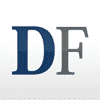Real-World Asset (RWA) Tokenization brings mainstream properties on the blockchain. The idea has garnered industry-wide attention with mainstream investment management firms like BlackRock and VanEck showing significant interest. Over $12 billion worth of real-world assets are already tokenized on the blockchain at the time of writing. To enable a better understanding of this concept, we discuss what real-world assets are, how RWA tokenization works, and how it benefits traditional and crypto investors.
Top Forex Brokers
What Are Real-World Assets (RWAs)?
Real World Assets are traditional properties with significant financial value. They include assets such as valuable commodities, real estate, precious metals (gold, silver, etc.), investment products (like treasury bills, shares, and bonds), fiat currencies, priceable artworks, and more. In a nutshell, they are tradable, financially relevant possessions whose value can be digitized.
Tokenizing Real-World Assets
Tokenizing Real-World Assets digitizes mainstream assets on the blockchain. It is the process of creating a digital representation of real-world assets on a blockchain network. This involves creating blockchain tokens that embody the value of the asset and give ownership rights of the real asset to the token holders.
The Tokenization Process
Tokenizing a real-world asset involves key processes that ensure proper representation of value and ownership. The procedure is as follows:
Asset Acquisition and Custody
To tokenize an RWA, an issuer is required to own or be in possession of the asset(s). For instance, to tokenize Gold, an issuer is expected to have an equivalent value of real gold in their custody. RWA token issuer also provides a verifiable claim to the asset.
Minting Blockchain Token(s)
The next step is to design the blockchain-related aspects of the RWA token. The issuer decides on the blockchain network on which the token will be minted, the type of token (Fungible token or NFT), and the token supply structure. They proceed to deploy the smart contract for the token issuance and mint tokens according to a determined structure.
Creating Off-chain Connections
Effective RWA tokenization requires off-chain connections that provide data on the mainstream asset. Technologies like Chainlink’s Decentralized Oracle Networks (DON) can feed the blockchain part of the RWA system with off-chain data.
Value Pegging and Maintenance
The value of the RWA token is expected to correspond to the value of the real-world asset. The issuer designs a system that pegs the value of the RWA token to the target asset.
Token Management Mechanism
In cases like gold and cash tokenization, holders of RWA tokens can redeem their tokens for the real asset. When this is done, the associated token is burnt on the blockchain. RWA token issuers can also mint more tokens when they acquire more assets.
Why Tokenize Real World Assets?
Compared to cryptocurrencies like Bitcoin, mainstream assets are rigid. This rigidity limits their applications and the level of financial benefits for owners. Tokenizing real-world assets allows more flexibility, enabling the fractionalization and global ownership of high-value assets. It also expands the use cases of these commodities. Primarily, it simplifies the management of real-world assets, allows P2P transactions, and borderless spending. Financially, it enables RWA owners to explore more opportunities in sectors like Decentralized Finance (DeFi).
Real-World Assets in DeFi
Tokenized Real-World Assets can be integrated into DeFi protocols. They can be used on decentralized exchanges and lending protocols. On lending protocols, RWA tokens can be borrowed or used as collateral to obtain crypto loans. For instance, RWA tokenization project, Ondo Finance’s OUSG (tokenized Treasuries), and Flux Finance’s stablecoin (fUSDC) can be used as collateral in lending protocols to generate stable yields. RWA tokens can also be traded on DEXes or added to liquidity pools for yield farming.
RWA Tokenization – Pros & Cons
Here are the advantages and disadvantages of RWA tokenization:
Pros of RWA Tokenization
- Cost-efficient management
Regular blockchain transactions cost a few cents or dollars. By adopting the blockchain, RWA tokenization allows investors to trade and transfer mainstream assets more cheaply.
- Transparency
RWA token transactions are public on the blockchain. This enables independent audits and more transparency.
- Liquidity
RWA tokenization globalizes mainstream assets. With more accessibility and a global investor base, more capital flows into these assets, creating deeper liquidity.
- Extended Financial Advantages
RWA tokenization allows holders to explore more financial benefits like yield farming, passive income through staking, and trading against a more diverse class of assets.
Cons of RWA Tokenization
- Volatility
By exposing RWA tokens to the crypto market, their price development could be affected by the inherent volatility of cryptocurrencies.
- Technological Complexity
Blockchain technology and RWA protocols are complex. For traditional investors, this may be hard to understand and use.
- Genuineness
Despite available verification systems, verifying the genuineness and solvency of an RWA token issuer could be tedious.
Risks of RWA Tokenization
- Custody Risks: Cases of hacks or mismanagement, or the assets held in custody of the RWA issuer, can cause significant losses for the RWA token holders.
- Blockchain Vulnerabilities: Technology-related issues like bugs and blockchain vulnerabilities create security risks for RWA token issuers and holders.
- Asset data management: RWA tokenization requires an efficient data management system. Malfunctions in the off-chain data connection can disrupt the whole system.
- Regulatory Compliance: Like other crypto assets, the regulatory framework for RWA tokens is still evolving. RWA token issuers are mandated to comply with regulatory procedures related to cryptocurrencies and the asset they are tokenizing.
My Take
RWA tokenization digitizes mainstream commodities and further creates a link between traditional finance and blockchain technology. Representing regular commodities as tokens on a blockchain offers several benefits, and the idea appeals to reputable mainstream institutions. RWA tokenization was born out of the need to create a more flexible version of mainstream assets. Sectors like real estate management can significantly benefit from fractionalized ownership of high-value properties. Despite the risks, RWA tokenization improves the ease of management, allowing RWA token holders to pursue more financial opportunities. A major challenge for RWA tokenization is the regulatory framework, which is still currently uncertain. Strict operational rules may limit the potential of RWA tokenization and the progression of new and existing projects.

